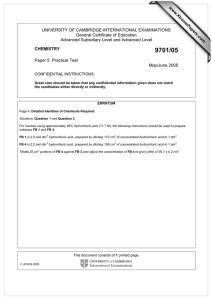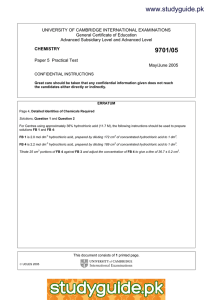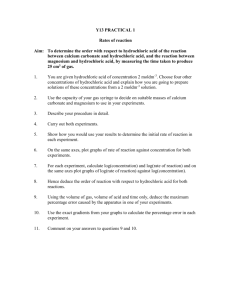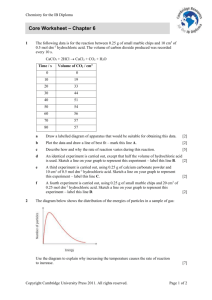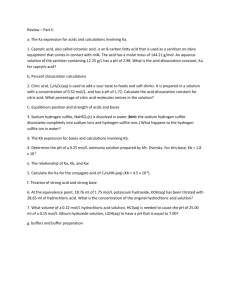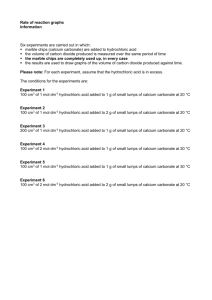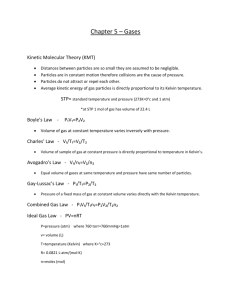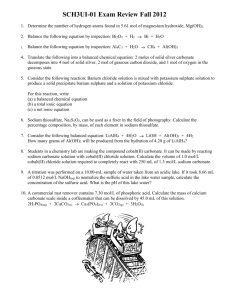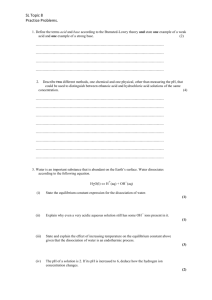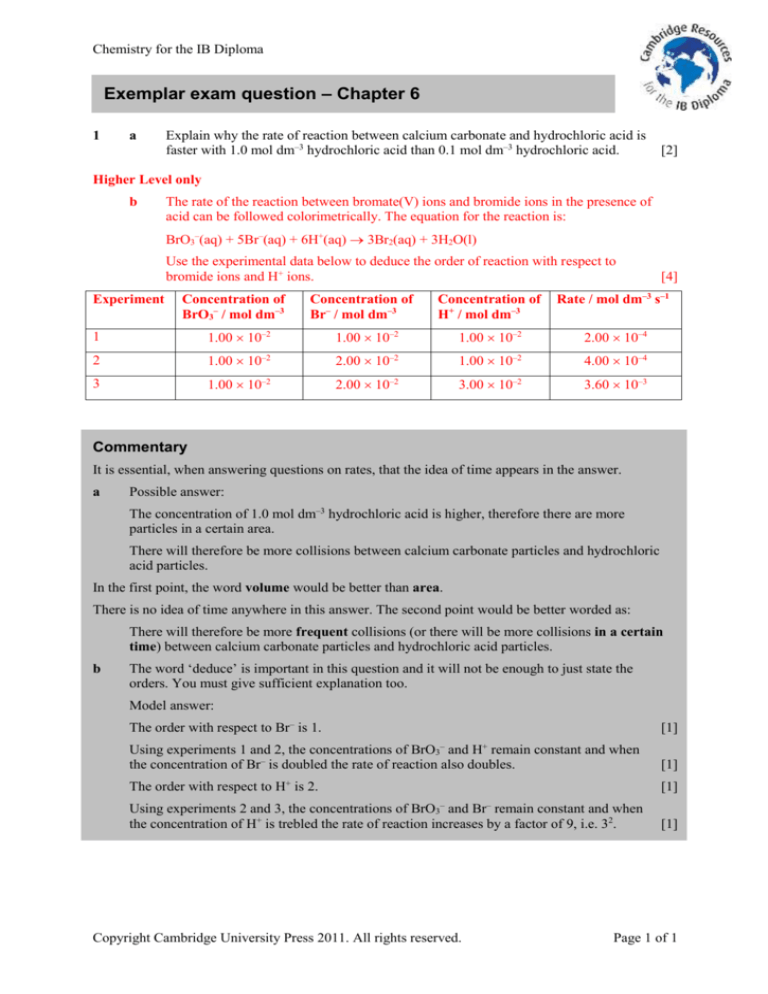
Chemistry for the IB Diploma
Exemplar exam question – Chapter 6
1
a
Explain why the rate of reaction between calcium carbonate and hydrochloric acid is
faster with 1.0 mol dm–3 hydrochloric acid than 0.1 mol dm–3 hydrochloric acid.
[2]
Higher Level only
b
The rate of the reaction between bromate(V) ions and bromide ions in the presence of
acid can be followed colorimetrically. The equation for the reaction is:
BrO3–(aq) + 5Br–(aq) + 6H+(aq) 3Br2(aq) + 3H2O(l)
Use the experimental data below to deduce the order of reaction with respect to
bromide ions and H+ ions.
Experiment
Concentration of
BrO3– / mol dm–3
Concentration of
Br– / mol dm–3
[4]
Concentration of
H+ / mol dm–3
Rate / mol dm–3 s–1
1
1.00 10–2
1.00 10–2
1.00 10–2
2.00 10–4
2
1.00 10–2
2.00 10–2
1.00 10–2
4.00 10–4
3
1.00 10–2
2.00 10–2
3.00 10–2
3.60 10–3
Commentary
It is essential, when answering questions on rates, that the idea of time appears in the answer.
a
Possible answer:
The concentration of 1.0 mol dm–3 hydrochloric acid is higher, therefore there are more
particles in a certain area.
There will therefore be more collisions between calcium carbonate particles and hydrochloric
acid particles.
In the first point, the word volume would be better than area.
There is no idea of time anywhere in this answer. The second point would be better worded as:
There will therefore be more frequent collisions (or there will be more collisions in a certain
time) between calcium carbonate particles and hydrochloric acid particles.
b
The word ‘deduce’ is important in this question and it will not be enough to just state the
orders. You must give sufficient explanation too.
Model answer:
The order with respect to Br– is 1.
[1]
Using experiments 1 and 2, the concentrations of BrO3– and H+ remain constant and when
the concentration of Br– is doubled the rate of reaction also doubles.
[1]
The order with respect to H+ is 2.
[1]
Using experiments 2 and 3, the concentrations of BrO3– and Br– remain constant and when
the concentration of H+ is trebled the rate of reaction increases by a factor of 9, i.e. 32.
[1]
Copyright Cambridge University Press 2011. All rights reserved.
Page 1 of 1

